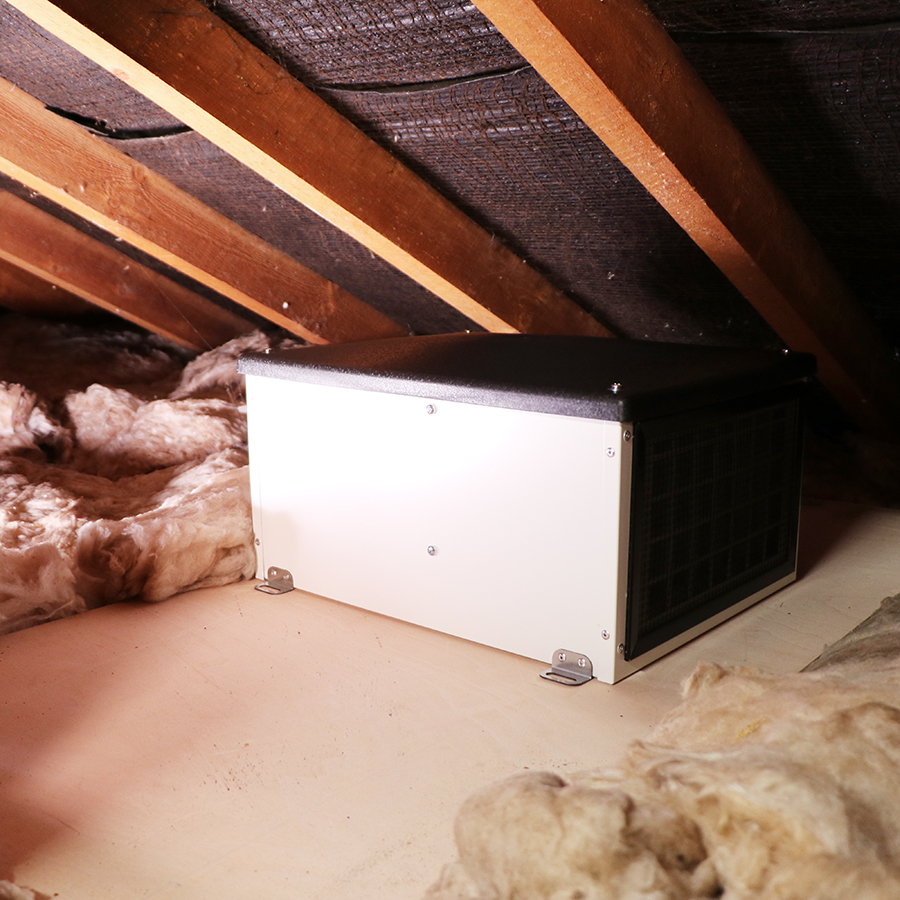Clearing the Air on Radon Gas: How Positive Input Ventilation Can Help
Clearing the Air on Radon Gas: How Positive Input Ventilation Can Help

When it comes to indoor air quality, we often think about common pollutants like dust, allergens, and humidity. But there’s a silent, potentially harmful intruder lurking beneath our homes: radon gas. Radon is a naturally occurring radioactive gas that can seep into buildings through the ground. In the UK, some areas are more susceptible to elevated radon levels than others, making it crucial to understand the risks and how to combat them.
Understanding Radon Gas in the UK:
Radon gas is colourless, odourless, and tasteless, making it impossible to detect without specialised equipment. It forms naturally from the radioactive decay of uranium in soil, rock, and groundwater. When radon levels become elevated indoors, either through direct entry from the ground or building materials, it can pose health risks. The UK has several radon-affected areas, primarily in regions with certain types of geology, like granite or limestone. Notable areas include Cornwall, Devon, and parts of Wales and Scotland.
The Radon Health Risk:
Radon is the second leading cause of lung cancer after smoking, and exposure to high levels of radon gas indoors can significantly increase the risk. The good news is that there’s a simple and effective solution to mitigate this risk – Positive Input Ventilation (or PIV for short).
Positive Input Ventilation (PIV) to the Rescue:
PIV systems work by gently introducing fresh air from outside into your home, creating positive pressure that displaces and dilutes indoor air pollutants, including radon gas. Here’s how it works:
- Fresh Air Injection: A PIV system draws in outdoor air through a filter and gently introduces it into your home via a central unit. This constant influx of fresh air reduces the concentration of indoor pollutants.
- Improved Air Circulation: PIV systems encourage air movement throughout your home, preventing stagnant air pockets where radon can accumulate.
- Maintaining Healthy Humidity Levels: PIV systems help control indoor humidity levels, reducing the conditions that encourage radon infiltration.
Why Choose PIV?
- Cost-Effective: Installing a PIV system is a cost-effective way to improve indoor air quality and protect against radon. It requires minimal maintenance and consumes very little energy.
- Continuous Protection: Unlike passive radon mitigation methods, PIV systems provide ongoing protection by continuously exchanging indoor air with fresh outdoor air.
- Easy Installation: PIV systems are relatively simple to install, often in just a few hours, and can be retrofitted into existing homes.
- Health Benefits: By reducing radon levels and improving overall air quality, PIV systems contribute to a healthier living environment for you and your family.
Sub-Floor Ventilation:
Where sub-floor ventilation is required, our Mori WMF is designed for just that – helping to provide humidity control, Radon gas control and air movement in hard to naturally ventilate, sub-floor spaces.
Ready to take the next step in improving your indoor air quality and radon protection? Contact us at Elta Trade to start your journey to a healthier, safer home environment.
Need help? Email or call the team on 01384 275771

